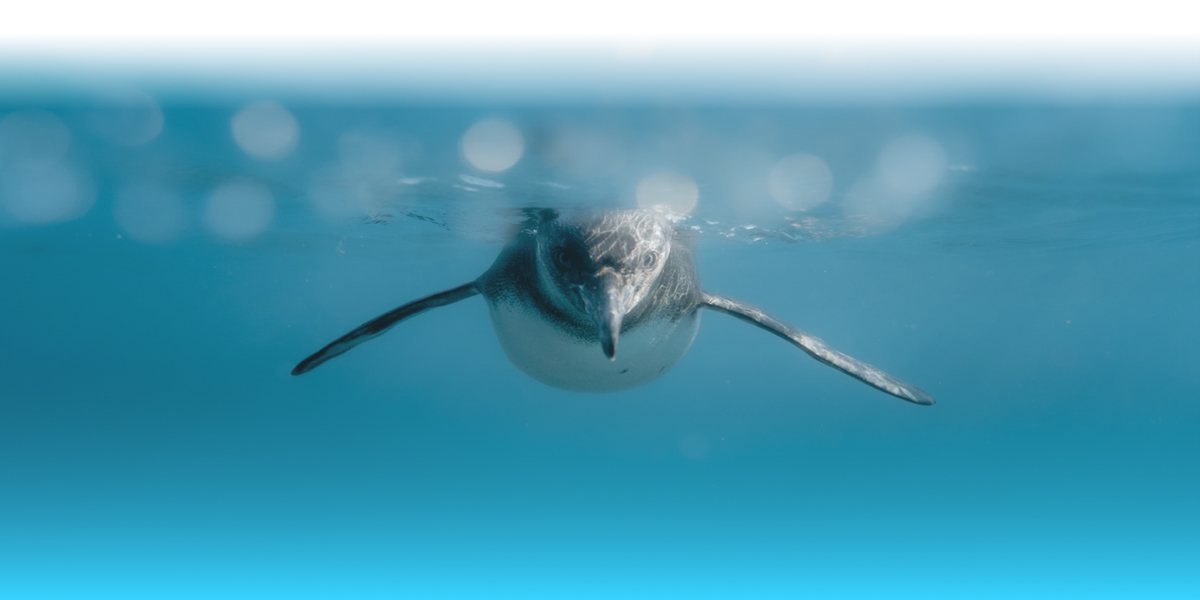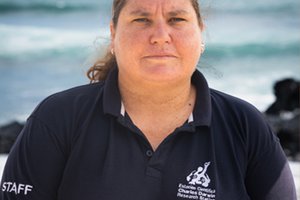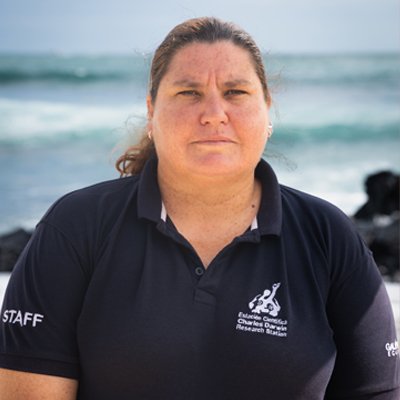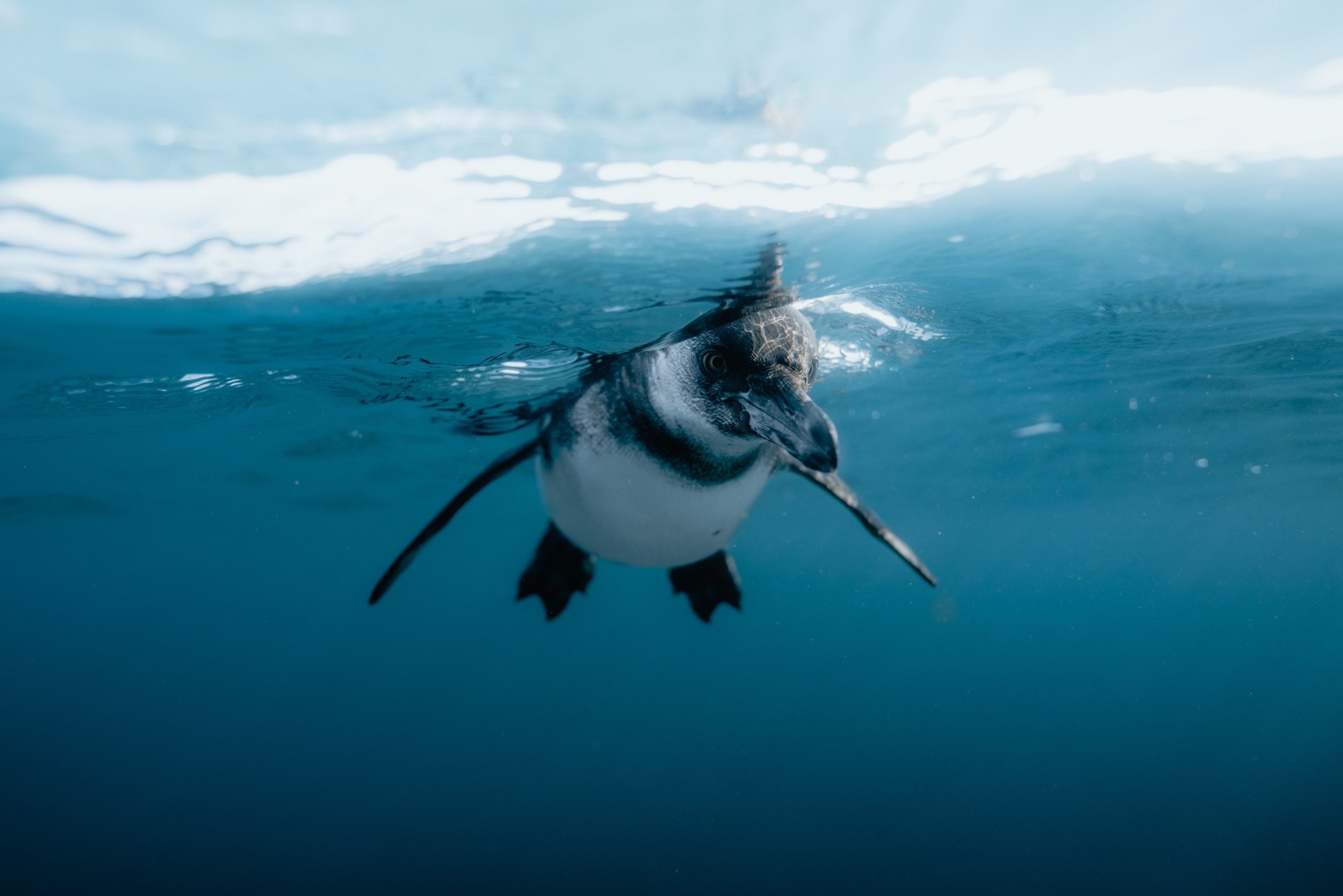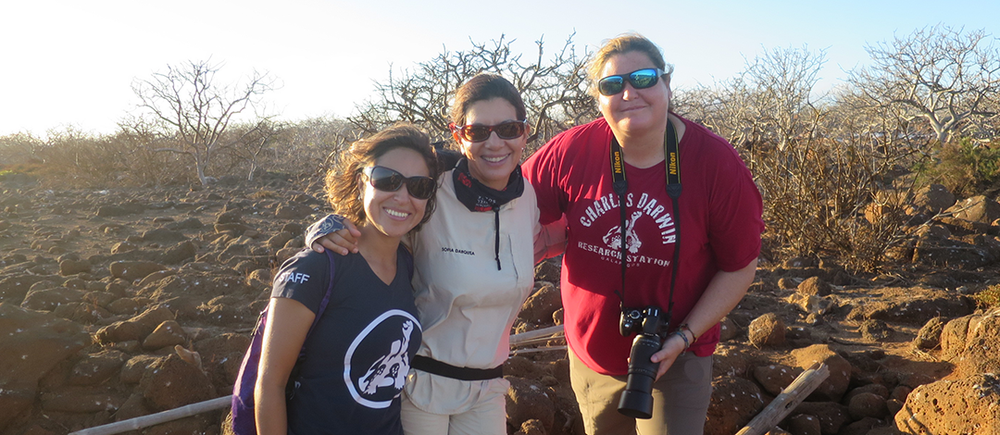
The Galapagos Biodiversity and Education for Sustainability Fund (GBESF) was created in 2017 by the Charles Darwin Foundation (CDF) and Ecoventura. CDF is a non-profit organization that provides knowledge and technical assistance through scientific research to the Galapagos National Park Directorate (GNPD) and has now teamed up with Ecoventura a well renowned family expedition cruise company that operates in the Galapagos Islands to work together for the conservation and sustainability of this amazing archipelago.
We are two scientists from the CDF that were invited to join an expedition on the M/V Origin alongside a group of wonderful guests from around the world with the objective to share our knowledge through scientific talks on several marine (Inti Keith) and terrestrial projects (Jacqueline Rodríguez) that take place in the Galapagos.
The expedition started on the island of San Cristobal where we met the guests, the crew and the M/V Origin, our home for the week. Seven wonderful days were filled with naturalist walks, snorkeling, kayaking and paddle boarding in the different visitor sites on the islands of San Cristobal, Española, Floreana, Santa Cruz, Santiago, Bartolome, South Plazas and North Seymour.
On the trip we had the great opportunity to share our passion for the marine world and the different terrestrial habitats we study with the guests and our Naturalists guides (Sofia Darquea and Gustavo Castro). The expedition on the M/V Origin also allowed us to learn more about each other’s projects and the complexity of them.
“This has been an excellent opportunity for guides and scientists to share their knowledge with each other and with the guests on board. It is interesting to compare an combine our knowledge based on experiences ad that generated by scientific studies”
— Sofía Darquea, Naturalist guide.
During the snorkeling activities I (Inti Keith) was able to show the guests the amazing marine ecosystem and the different species we can find in it. We had several experiences where we snorkeled with sea turtles, penguins, sharks and a huge variety of reef fish. The highlight for many of the guests were the playful sealions that came to play with us every time we got in the water, on one occasion in Española there was a group of sealions playing with a sea cucumber and passing it between each other like if it was a football and playing with all of us in the water. I was also able to show the guests and our naturalist guides some examples of marine non-native species that are present in the Galapagos Marine Reserve (GMR).
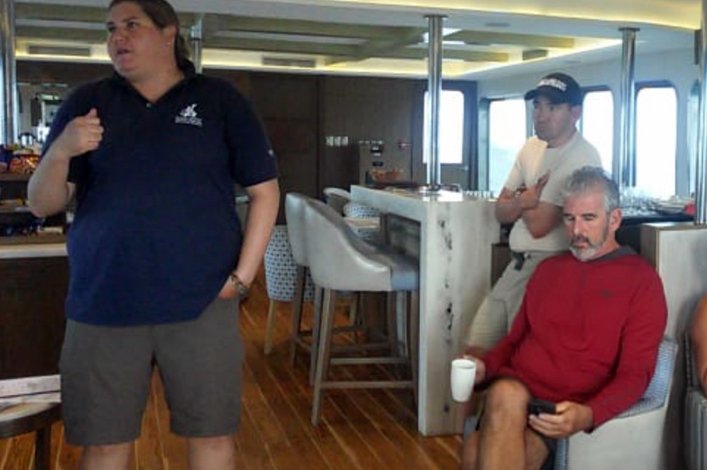
“I really appreciate your passion; I appreciate what you are doing for conservation”
– Wes Howard guest on board M/V Origin
During the week we gave scientific talks to the guests and naturalist guides on board, we talked about several different projects (Marine Invasive Species, Subtidal Ecological Monitoring, Terrestrial Invasive Species and Ecological Restauration in Los Gemelos). One of the subjects that people found interesting and lead to several conversations was the studies we are both conducting with invasive species (marine and terrestrial). The introduction of non-native species has been identified as the second most important reason for biodiversity loss worldwide after habitat destruction and on oceanic islands it is considered the first.
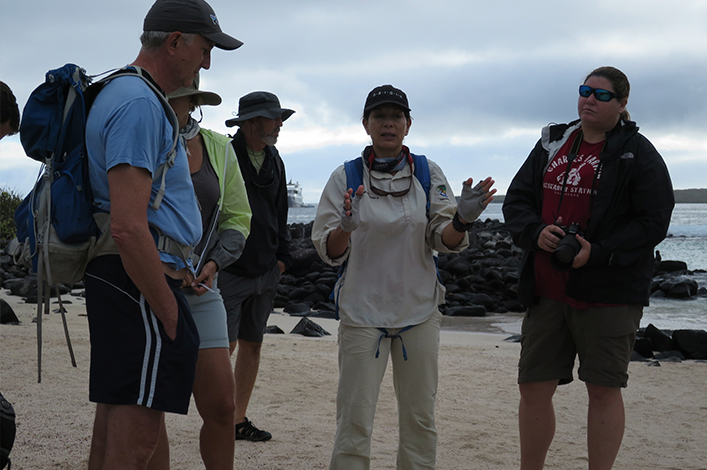
Guests were curious about terrestrial introduced species and I (Jacqueline Rodríguez) was able to point some out during the naturalist walks: yellow paper wasps (Polistes versicolor), fires ants (Solenopsis geminata) and blackberry (Rubus niveus). They were impressed with the successful biological control of the cottony cushion (Icerya purchasi) scale with the lady bug (Rodolia cardinalis), the ecological restoration efforts of the Scalesia forest in Los Gemelos, the stories about the endemic species that we had the chance to observe like the carpenter bee (Xylocopa darwini) that builds nests in wood and is considered the most important flower pollinator of native plants.
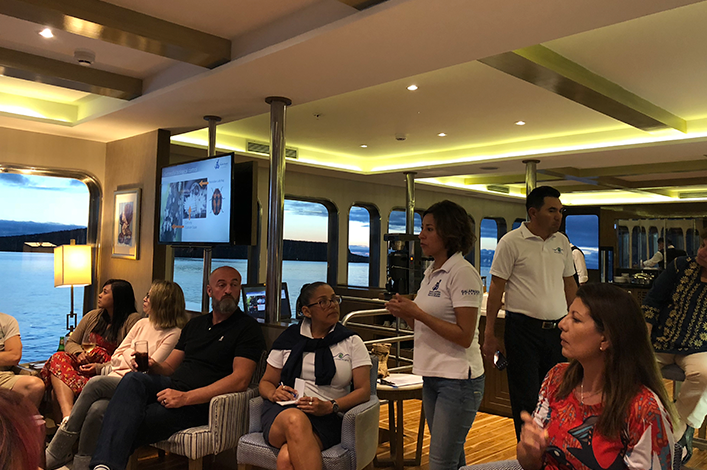
Thank you! You have made my vacation, an incredible educational experience”
- Charlotte Howard - guest on board M/V Origin
We are grateful to Sofia and Gustavo for guiding us, to the crew for the great service and for being so friendly and of course to the guests for letting us share with them our knowledge, work and love for the Galapagos Islands. Thank you for your support!


